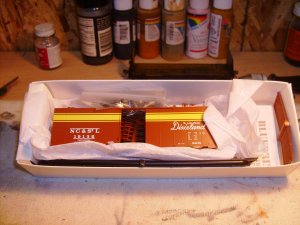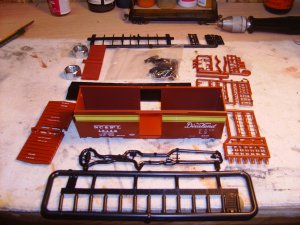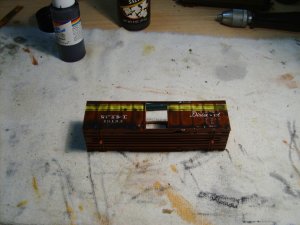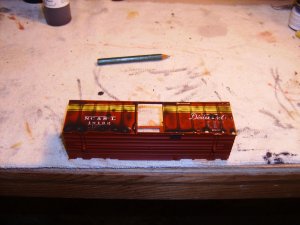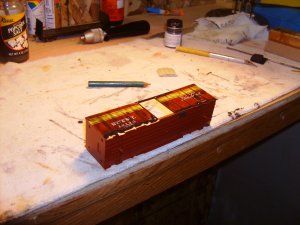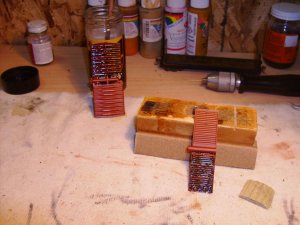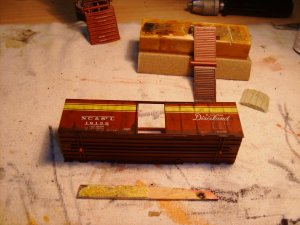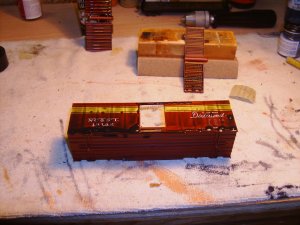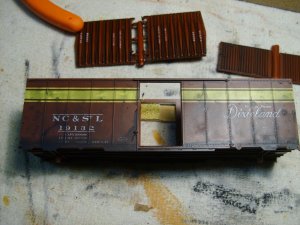N
NP2626
Guest
I have been using acrylic paint washes to weather my rolling stock and for my purposes I am happy with the results. My acrylic washes are sometimes used as a portion of the weathering process, as I may use other paint types and weathering chalks to complete a model. Sorry, I am not scientific about the ratio of water to paint to make my washes, I simply dilute the paint to a consistency that looks right. The fact that how much water is used varies, seems to make the process change from one batch of cars to the next, something I like. The process is not very controllable. Once the wash has been put on and dried, removing may be difficult; however, I have never wanted to remove the weathering I've applied. Since I very rarely use Ready To Run rolling stock and enjoy building my freight and passenger equipment, the process I'm about to discuss is used on rolling stock kits. Branchline, Proto 2000, Intermountain, Red Caboose C&BT Shops and Accurail kits are the most common freight cars I use. Most where purchased before the RTR craze hit; but, I still find kits of all these manufacturers items on Ebay and at train shows. As the title above states I do much of my weathering previous to applying and I only do this type of weathering to cars that I want to be well weathered. So, if you think railroad equipment should not be weathered to the degree that I like, maybe you should stop reading! The following photos show a Branchline Kit purchased off Ebay:
